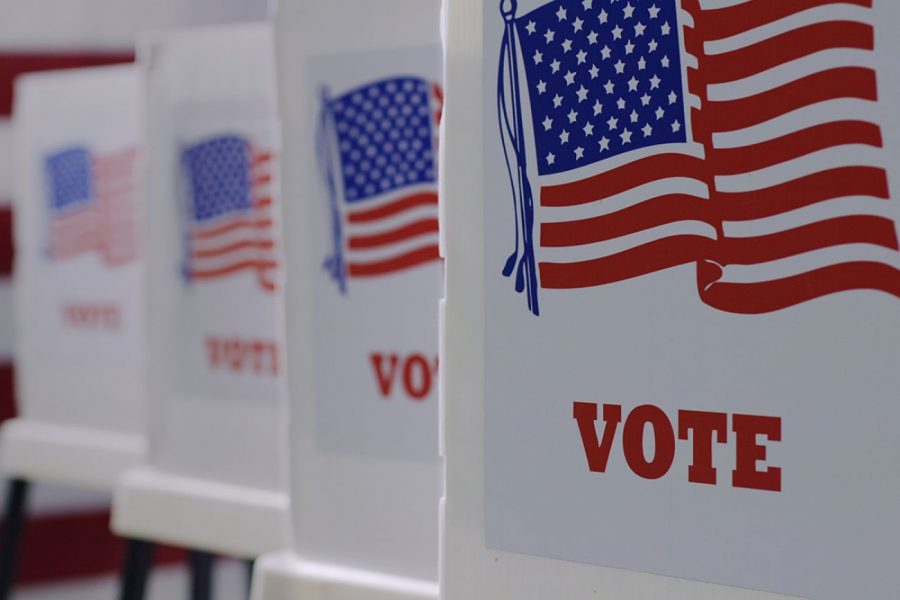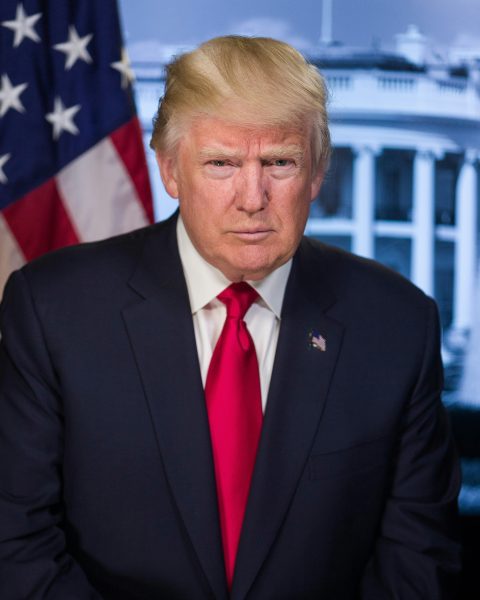2022 Michigan Midterms: What Does It All Mean?
Photo courtesy of Detroit Free Press
The 2022 Michigan midterms that occurred on Nov. 8 marked quite a few important elections for government positions and proposals that were extremely important for the state. The spotlight was on the race for governor, between current Governor Gretchen Whitmer and conservative commentator Tudor Dixon, two candidates with radically differing views. Relating to that, there were three proposals on the Michigan ballot, but the one with the most eyes on it was proposal 3, an amendment that, if passed, would protect women’s reproductive rights in Michigan.
Now more than ever, young people voting has had a major impact on the political sphere. This midterm brought a whole new generation of voters who recently turned 18, some being students at Berkley High School. When asked about his thoughts prior to the election, new voter and senior Nicolas Miller noted that he did not feel prepared, saying, “I don’t really know how to [vote]. I’d say I’m pretty uninformed about everything”. He did say that the information he knew was mostly gathered from his parents and social media, noting YouTube as a source. He also clarified that he knew how he was voting on some issues, such as Proposal 3, but not others. From Miller’s testimony, it seems that some issues had wider coverage and publicity than others. That being said, all of the issues on the ballot are relevant to Michigan and BHS, and students who can vote will have an impact on these issues.
To start, there were five contenders for governor this year, but the two that held the attention of the media the most were Democratic candidate Governor Gretchen Whitmer and Republican candidate Tudor Dixon. Whitmer is the incumbent candidate up for re-election and has focused her campaign on improving road conditions and education. According to bridgemi.org, road conditions have improved under Whitmer, but test scores have dropped. However, there is nothing directly linking this drop to Whitmer’s term as Governor. She also has differing views from Dixon on both guns and reproductive rights. Whitmer is in support of proposal 3 and passed a law in July 2022 in an attempt to decrease gun violence, according to Michigan.gov.
On the other hand, Tudor Dixon has stated that she does not support abortion in any context, calling Whitmer’s view “extreme” during their debate at Oakland University. According to bridgemi.org, Dixon has also run ads claiming that Whitmer is “indoctrinating children,” something of which she provides no proof. At the Oakland University debate, she stated that she opposes background checks. Dixon also advocates for arming teachers, saying that “I don’t want our kids in a ‘sitting duck zone’ where the only person that has a weapon is the shooter who is going in to take their lives,” as reported by NPR.org. There was not a definite pick for who would win the position, as there were a lot of controversies surrounding both candidates from different sides. In the end, Governor Gretchen Whitmer won the election for governor with 54.5% of the vote. Since she is aligned with the Democratic party, Michigan governing may lean that way altogether. Whitmer will likely continue the focus on road maintenance and educational improvements, along with carrying on the fight for reproductive rights.
Moving on, proposal 1 of 3 would be a change to the Michigan constitution that would require members of the state government to provide reports on their finances. It would also limit state legislators’ terms to 12 years in total. These proposals may not directly affect everyday Michigan life, but they impact how the government is run and could hold government officials more accountable. Michigan voted “yes” on Proposal 1, meaning that the new term limits and finance transparency measures will go into effect.
Proposal 2 would add voting policies to the constitution, aiming to provide a “fundamental right to vote”, according to ballotpedia.com. It would require the state to count overseas ballots if postmarked by election day but delivered later, allowing people to sign up once always to vote absentee (by mail), and require 9 days for early voting, meaning that people would be able to vote in-person 9 days leading up to election day. It would also allow voters to identify themselves through either photo identification or a signed statement, a policy adopted in a lot of places to make voting more accessible. The objective of this proposal seems to be to make voting easier by making the voting process less confusing and intimidating, especially for young voters who are less informed. The people voted “yes” on Proposal 2, which put all of the previously covered voting measures into effect. These measures will make voting easier and more accessible to all citizens, including those new to voting. Students that may be unsure of or intimidated by the voting process, like Nicolas, will have an easier time learning about it and be more aptly prepared to participate in democracy.
The final proposal on the ballot was proposal 3, seemingly the most controversial. It focuses on the reproductive rights of Michigan citizens. To fully understand the importance of this proposal, it is essential to widen the lens. The overturning of Roe vs. Wade that occurred earlier this year has handed the responsibility of keeping abortion legal to each individual state. This has been somewhat of a divisive issue in Michigan and has been one of the main focuses of the race for governor, as Dixon has targeted a lot of her campaign towards those against proposal 3. On the contrary, Whitmer was one of the first governors to respond to the overturn by stating that abortion rights would remain in Michigan. The proposal has also caused a good deal of controversy among citizens, as seen through the various yard signs that can be seen around Berkley labeling it “confusing and extreme”. According to NPR.org, abortion [was] one of the largest motivating factors behind Michigan citizens voting in this election.
The proposal would allow individuals to make their own decisions about reproductive rights, including abortions, sterilization and birth control, as well as miscarriage and infertility care. It would also allow the state to regulate abortions after the fetus is viable, but not in the case of injury or death. Finally, it prohibits any laws being made to control reproductive rights or block the actions of the proposal. To be clear, a “yes” vote would instill the protection of reproductive rights, and a “no” vote would remove that protection. Michigan voted “yes” on Proposal 3, preserving reproductive rights in the state. Abortion and other reproductive rights will remain legalized and accessible because of this vote.
Those are only some of the issues that were on the ballot this election. Overall, Michigan voted in favor of a lot of changes. According to bridgemi.org, the voter turnout this year was higher than expected, with a significant amount of voting on college campuses and absentee ballots. Especially with the more controversial measures on the ballot, voting remains an important responsibility of citizens of all ages, but especially for young people.












